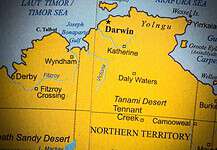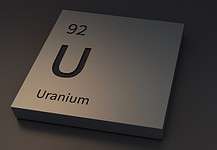THE Federal Government’s projected $1.1 billion surplus has taken a ‘double hit’ after it was revealed that the Minerals Resource Rent Tax (MRRT) had collected no revenue in its first three months of operation.
With the tax funding billions of dollars’ worth of programs, a shortfall could force the Federal Government to draw money from other areas or abandon its long-held plans for a surplus.
Even as the Government scaled back estimated receipts from the MRRT for the 2012 to 2013 financial year from $3.1 billion to $2 billion, Treasurer Wayne Swan defended the levy, claiming the real reason for the slow start was the well-known cooling of the Chinese economy.
Plummeting coal and iron ore prices have forced the Government to slash forecast MRRT revenue in its first four years by 32 per cent to $9.1 billion.
Iron ore prices fell 48 per cent between June 30 and September 5, with coking coal revenue dropping by about 32 per cent and thermal coal by 9 per cent during the same period.
In addition, the Australian dollar has persistently remained above the value of US$1.00, which has also damaged mining profits.
Yet while BHP, Rio Tinto and Xstrata did not make any profits-based payments under the MRRT in the first quarter, they are accruing million of dollars in unexpected deductions from the tax, according to The Australian newspaper.
The WA, NSW and Queensland Governments have hiked royalty rates in the past year, and the biggest iron ore and coal producers are rapidly stockpiling state royalty ‘credits’ to offset their Commonwealth payments.
The three big miners have come to an agreement with the Federal Government whereby all state royalty payments are offset against the MRRT and credits accrue at a compound interest rate of 10 per cent.
While Treasury forecasts for the MRRT revenue have taken into account the offsets for state royalties, they assumed there would be revenue from the tax.
Mr Swan has insisted, however, that the first quarter MRRT earnings, or lack thereof, should not be used to estimate revenues for the rest of the year, while Regional Australia minister Simon Creansaid the MRRT was never projected to raise revenue in its early application because mining companies were making massive tax-deductible infrastructure
investments.
Trade minister Dr Craig Emerson has also countered the widespread condemnation, saying that the lack of revenue from the mining tax was just a reflection of the minerals market prices.
He said that with a profits-based tax there would always be “swings and roundabouts”, but added that the Government was completely happy with the tax design.
“[Profits-based taxes] are stable over time because when profits are high they collect a good share of revenue for the people [and] when profits are low they reflect that reality as well,” Dr Emerson said to Sky News on October 27.
“There will be fluctuations…[but] it will collect revenue,” he said.
Assistant Treasurer David Bradbury echoed the sentiment, saying that good public policy should not be judged on a single quarter.
“If companies are not making massive profits then we rely on the company tax that comes in the ordinary course,” he told Channel Ten’s Meet the Press. He added that the MRRT accounted for less than 1 per cent of Commonwealth revenues.
Advertisement








































